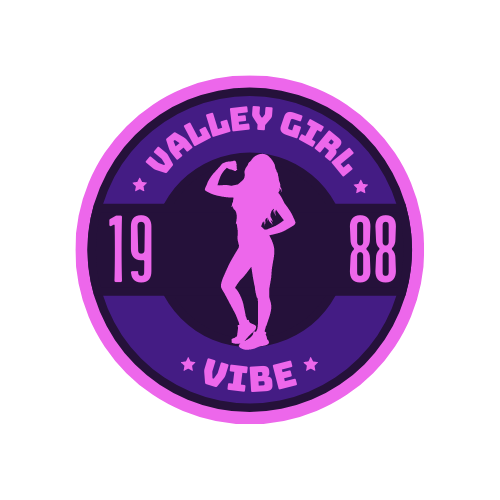Just when you think your sunburn is at its worst, it starts itching after 5 PM, and you’re left wondering why. This uncomfortable sensation is often linked to a phenomenon known as Hell’s Itch, where your body’s reaction to UV exposure intensifies as the sun goes down. Researchers have uncovered that this unique reaction can cause significant discomfort, making evenings particularly unbearable for those suffering. To dive deeper into this surprising issue, check out this article on Hell’s Itch: A Unique Reaction to UV Exposure – PMC.
Understanding Sunburn
Your skin is your body’s largest organ, and it can be easily damaged by excessive exposure to ultraviolet (UV) radiation. Sunburn occurs when your skin gets too much sun, leading to redness, pain, and sometimes swelling. It is your body’s inflammatory response to this damage, signaling the need for healing, and can be uncomfortable or even severe depending on the extent of exposure.
What Causes Sunburn?
What causes sunburn is the overexposure to UV rays, primarily from the sun, which can damage the DNA in your skin cells. This damage leads to inflammation, which manifests as the familiar symptoms of sunburn, including redness, peeling, and discomfort. When your skin isn’t adequately protected, it can result in these painful and unsightly consequences.
The Biology of Skin Damage
After your skin has been exposed to UV radiation, the body initiates a defense mechanism by increasing blood flow to the affected areas, resulting in redness and swelling. This response is a sign that your body is working to repair the damaged cells. The pain associated with sunburn is due to the release of inflammatory substances that sensitize your nerve endings, making you feel discomfort. Additionally, prolonged damage to skin cells can lead to long-term effects, including an increased risk of skin cancer.
Sunburn triggers a series of biological responses in your skin that can cause both immediate and lasting effects. When UV radiation penetrates your skin, it leads to DNA damage in the cells, which your body tries to repair. In these damaged areas, the skin releases substances that increase blood flow, creating that familiar redness you experience. During this process, pain receptors become activated, causing discomfort and urging you to seek relief. If you suffer from repeated sunburns, the cumulative damage can raise the risk of skin conditions, including premature aging and even skin cancer.
The Itch Factor
The discomfort you feel from sunburn often intensifies as the day progresses, especially after 5 PM. This phenomenon, sometimes referred to as “hell’s itch,” can become unbearable. For how to get relief from a severe sunburn, it’s important to understand the underlying causes of this itchiness and how to mitigate it.
Why Sunburn Itches
Any time your skin is damaged, it can trigger an inflammatory response. This includes sunburn, where your skin becomes red and painful. The damaged skin sends signals to your brain, prompting an urge to scratch, which can exacerbate the irritation and prolong your discomfort.
The Role of Histamines
About your body’s defense system responds to skin damage by releasing histamines, chemicals that play a significant role in allergic reactions and itch sensations. When you experience sunburn, histamines are released to trigger inflammation, causing that maddening itch, especially in the evening when your skin begins to cool down.
In fact, histamines can lead to intense itchiness if your skin has been overexposed to UV rays. As your body tries to heal, the level of histamines increases, amplifying the urge to scratch. This relentless scratching can result in further skin damage and could lead to potential infections. Therefore, managing histamine levels and avoiding irritation is vital for your recovery.
The Time Factor
There’s a fascinating connection between the time of day and how your skin reacts to sunburn. As the sun begins to set and the temperature cools down, your body undergoes various changes that can heighten the sensation of itching from sunburns. Understanding these shifts can help you manage your discomfort more effectively.
Why 5 PM?
With the late afternoon sunlight diminishing around 5 PM, your body’s inflammatory responses may become more pronounced. This transitional time tends to coincide with increased awareness of physical sensations, making you more sensitive to the irritation caused by a sunburn.
Circadian Rhythms and Skin Reactions
At this time, your circadian rhythms play a significant role in how your body processes inflammation and irritation. These natural cycles regulate various biological processes, including immune function and skin regeneration. As evening approaches, your skin may react differently due to these internal mechanisms.
Reactions to sunburn are not solely about external factors; your body’s internal clock is at work, influencing how you feel. Research indicates that during the evening, your skin’s permeability increases, which can amplify sensations of pain and itching. Additionally, hormonal changes occur that can exacerbate inflammation, further intensifying your discomfort. Understanding these processes can equip you with the knowledge needed to address your symptoms, especially around the evening hours.
Relief Techniques
Many individuals find themselves struggling with persistent itching from sunburns, especially as the day winds down. Fortunately, there are effective relief techniques you can employ to alleviate discomfort. Cool baths, aloe vera gel, and over-the-counter hydrocortisone creams can soothe irritated skin. Additionally, keep your skin moisturized and avoid hot showers or prolonged sun exposure to help expedite the healing process.
Home Remedies
Before trying any commercial products, consider some home remedies that can offer relief from sunburn itching. Applying cold compresses or soothing oatmeal baths can significantly reduce itching. Natural remedies such as coconut oil or tea tree oil may also help cool your skin and provide hydration, enhancing your comfort as your skin heals.
When to Seek Medical Attention
Around the one to three-day mark post-sunburn, it’s vital to assess the severity of your condition. You should seek medical attention if your sunburn is accompanied by severe pain, blisters that cover a large area, or if you experience fever, chills, or confusion. These symptoms may indicate more serious damage and potential infections.
And if you notice any signs of infection, such as increased redness, swelling, or pus, it’s imperative to reach out to a healthcare professional. Severe sunburns can lead to complications, including fluid loss or heat-related illnesses. Additionally, if your pain is overwhelming and does not improve with at-home treatments, seeking medical intervention can help you avoid long-term skin damage and expedite your recovery.
Prevention Strategies
To effectively guard against sunburn, you need to implement a few important strategies. Start by choosing the right sunscreen, reapply it every two hours, and take note of your daily UV exposure. Additionally, consider wearing protective clothing, such as wide-brimmed hats and sunglasses, and seek shade during peak sun hours. These steps can significantly reduce your risk of burning, allowing you to enjoy the outdoors safely.
Sunscreen Application
Strategies for applying sunscreen include selecting a broad-spectrum product with an SPF of at least 30 and ensuring you apply it generously. Use about one ounce (a handful) to cover all exposed skin, and be diligent in reapplying after swimming, sweating, or towel drying. This method not only enhances protection but also minimizes the chances of that irritating post-sunburn itch.
Timing Your Sun Exposure
On days when the UV index is high, you should limit sun exposure to early morning or late afternoon. This practice means taking advantage of the sun’s less intense rays, allowing you to enjoy time outdoors while reducing the risk of sunburn. By avoiding mid-day sun, generally between 10 AM and 4 PM, you can protect your skin’s health and decrease itching frustration later in the day.
Your strategy for timing sun exposure can create a positive impact on your overall skin health. Try to schedule outdoor activities in the early morning or late afternoon when UV rays are less intense. Understanding this can help you avoid potential burns and the associated deterioration in skin condition. Fortunately, making this small adjustment can go a long way in ensuring that you are not plagued by that annoying post-sunburn itch after 5 PM.
Myth Busting
Keep in mind that a sunburn doesn’t just stop hurting after sunset; your skin continues to react well into the evening. For more insights on managing your discomfort, check out How to Deal When Your Painful Sunburn Becomes ….
Common Misconceptions
On many occasions, people believe that sunburn pain and itching will immediately resolve at night. However, this isn’t the case, and your skin can remain sensitive for hours longer than expected.
Fact vs. Fiction
Beside the common belief that sunburn symptoms end when the sun sets, you should be aware that skin healing can trigger reactions long after you leave the sun. Skin cells continue to express inflammation and release signals that may cause irritation, particularly during the evening. It’s important to address these concerns proactively.
Understanding this process is vital for your comfort and health. When your skin is damaged from UV exposure, it doesn’t just hurt; it can lead to itchiness as nerve endings react to inflammation. The evening hours can exacerbate this because you may be more aware of the sensations in a quieter environment. Therefore, you must manage your symptoms effectively to minimize discomfort and protect your skin’s recovery process.
Conclusion
To wrap up, understanding why your sunburn itches after 5 PM can help you manage your discomfort effectively. It often relates to skin’s natural healing process and environmental factors, such as temperature changes in the evening. By recognizing this pattern, you can take proactive steps to soothe your skin, whether through moisturizers or cooling treatments. Ultimately, being aware of your body’s responses can lead to a more comfortable recovery from sunburn.
FAQ
Q: Why does my sunburn start to itch after 5 PM?
A: The itching sensation associated with sunburn can be exacerbated due to the body’s natural circadian rhythms. As the day progresses, the skin can become drier and lose moisture, particularly after being exposed to sun and heat throughout the day. This decrease in hydration can lead to an increase in irritation and itchiness in sunburned areas, which tends to become more noticeable in the evening when the body begins to relax. Additionally, the transition from day to night can trigger certain hormonal responses that might amplify feelings of discomfort.
Q: Are there specific ingredients in sunburn treatments that can help with the itching after 5 PM?
A: Yes, certain moisturizing and soothing ingredients can be effective in alleviating the itching associated with sunburn. Look for lotions or gels that contain aloe vera, which is known for its cooling and soothing properties, or hydrocortisone cream, which can reduce inflammation and itchiness. Products with oatmeal or menthol can also provide relief from itching sensations. Applying these treatments in the late afternoon or early evening may help prevent itching as the day winds down.
Q: Is there anything I can do during the day to prevent itching from my sunburn later in the evening?
A: To minimize nighttime itching due to sunburn, it’s important to keep the affected areas well-hydrated throughout the day. Regularly applying a gentle, fragrance-free moisturizer can help maintain skin hydration and lessen dryness as the evening approaches. Drinking plenty of water is also vital to keep your skin hydrated from the inside out. Additionally, wearing loose-fitting clothing can help reduce friction and irritation on sunburned skin, making it less likely to itch later on.





